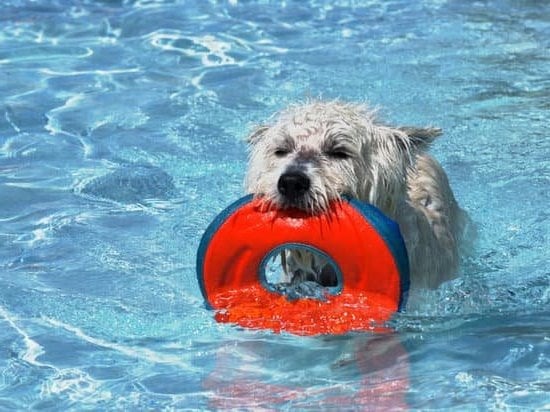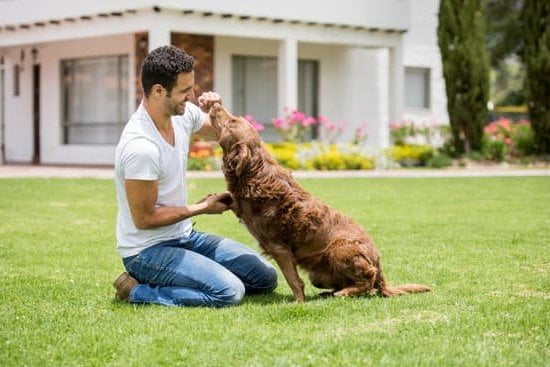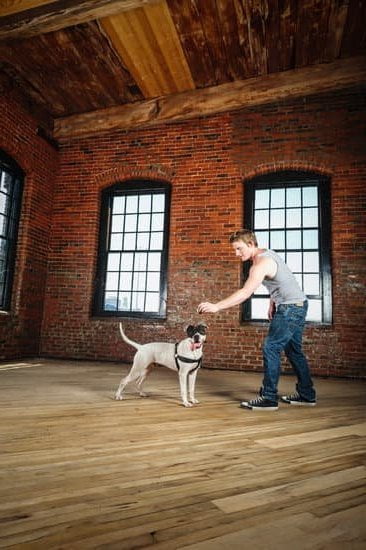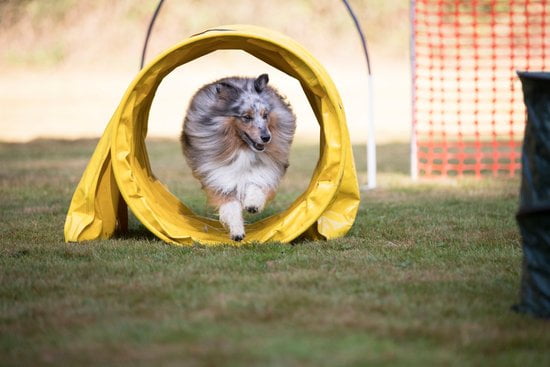Are you wondering how to train your dog with a prong collar? Using a prong collar for training can be an effective tool if used correctly. This article will guide you through the process of understanding and using a prong collar to train your furry friend, ensuring that both of you have a positive and successful experience.
Before delving into the specifics of training with a prong collar, it’s essential to understand what it is and how it functions. The prong collar, also known as a pinch or training collar, is designed to mimic the natural correctional bite that dogs receive from their mothers or other pack members during socialization. It is a humane and effective way to communicate boundaries and expectations to your dog during training sessions.
In this comprehensive guide, we will take you through the importance of proper training techniques, fitting the prong collar correctly, utilizing positive reinforcement methods for training, addressing behavior issues with the prong collar, as well as various training exercises and techniques. By following these steps with consistency and patience, you’ll be on your way to building a strong bond with your well-trained dog.
Additionally, we’ll provide safety considerations and responsible use of the prong collar to ensure that both you and your pet stay safe throughout the training process.
The Importance of Proper Training Techniques
Proper training techniques are crucial when using a prong collar to train your dog. It is important to understand that the prong collar is a tool to aid in training and should not be used as a punishment device. Using the prong collar with proper training techniques can help reinforce positive behaviors and correct unwanted behavior in a gentle and effective manner.
When using a prong collar, it is essential to use positive reinforcement methods for training. This means rewarding your dog for good behavior with treats, praise, or toys. Positive reinforcement helps create a strong bond between you and your dog and encourages them to repeat the desired behavior. It is important to avoid harsh punishments or corrections when using a prong collar as this can lead to fear or anxiety in your dog.
In addition, consistency and patience are key elements in proper training techniques with a prong collar. Consistently enforcing rules and expectations for your dog will help them understand what is expected of them, leading to more successful training outcomes.
Similarly, having patience during the training process is essential as it may take time for your dog to understand and respond to the training with the prong collar. By using positive reinforcement methods, consistency, and patience, you can effectively train your dog with a prong collar while building a strong bond based on trust and respect.
Getting Started
Understanding the Prong Collar
A prong collar, also known as a pinch collar, is a training tool used in dog obedience training. It consists of a series of metal links fitted with blunt prongs that pinch the dog’s neck when it pulls on the leash.
When used correctly, the prong collar can effectively communicate to your dog that certain behaviors are undesirable without causing harm. It is important to note that the prong collar should only be used under the guidance of a professional dog trainer or behaviorist.
Choosing the Right Size
Before using a prong collar on your dog, it’s crucial to ensure that you have the correct size. A prong collar that is too tight can cause discomfort and even injury to your dog, while one that is too loose will not effectively communicate with your pet.
To determine the right size for your dog, measure their neck circumference and add two inches. Most prong collars come with adjustable links to help you achieve the perfect fit for your pet.
Fitting Process
To fit the prong collar correctly, start by removing any extra links until there are only enough left to create a snug fit around your dog’s neck. The collar should sit high on the neck, just behind the ears and under the jawline.
Make sure that all the prongs are touching your dog’s skin but not digging in too deeply. It’s essential to regularly check and readjust the fit of the collar as your dog grows or gains or loses weight.
By following these fitting guidelines, you’ll ensure that your dog is comfortable and safe when using a prong collar during training sessions. Always remember to seek professional advice on how to train your dog with a prong collar to ensure you’re using it properly and effectively for both you and your canine companion.
Positive Reinforcement Methods for Training
Using a prong collar for training can be effective when combined with positive reinforcement methods. Positive reinforcement involves rewarding your dog for good behavior to encourage them to repeat that behavior in the future. This method is widely accepted as an effective and humane way to train dogs, and it can be especially beneficial when using a prong collar.
Understanding Positive Reinforcement
Positive reinforcement involves using rewards, such as treats, praise, or playtime, to encourage your dog to exhibit the desired behavior. When using a prong collar, it’s important to pair the correction from the collar with immediate positive reinforcement when your dog responds correctly. This helps your dog understand what they are being corrected for and what they should do instead.
Using Treats and Praise
When training your dog with a prong collar, make sure to have plenty of small, tasty treats on hand. Whenever your dog responds appropriately to a cue or corrects their behavior after a gentle correction from the prong collar, immediately offer them a treat and lavish them with praise.
This will help your dog associate the correct behavior with something positive, making it more likely that they will repeat it in the future. Remember that consistency is key when using positive reinforcement methods with a prong collar.
Clicker Training
Another popular positive reinforcement method involves clicker training. Using a small clicking device in combination with treats can help reinforce good behavior during training sessions. When your dog responds correctly or exhibits desired behavior, you can use the clicker to mark the moment followed by praise and a treat. Over time, your dog will learn to associate the sound of the clicker with receiving a reward for their actions.
By incorporating positive reinforcement methods into your training routine while using a prong collar, you can effectively communicate with your dog and build trust and confidence in them during the learning process. Always remember to be patient and consistent as you work towards building a strong bond with your well-trained canine companion through positive reinforcement techniques when using a prong collar.
Addressing Behavior Issues With the Prong Collar
When addressing behavior issues with your dog using a prong collar, it is essential to first understand the underlying cause of the problematic behavior. Whether it’s excessive pulling on walks, jumping on people, or aggressive behavior, the prong collar can be an effective tool when used correctly. However, it is crucial to approach training with patience and consistency while focusing on positive reinforcement methods.
Here are some techniques and exercises to address common behavior issues using a prong collar:
1. Excessive Pulling: Teach your dog loose leash walking by providing gentle yet firm corrections when they pull. Use positive reinforcement by rewarding your dog with treats or praise when they walk calmly beside you.
2. Jumping on People: When your dog jumps on people, use the prong collar to gently discourage this behavior. As soon as they jump, give a quick leash correction with the prong collar and redirect their attention to an appropriate behavior such as sitting or lying down.
3. Aggressive Behavior: If your dog displays aggressive behavior towards other dogs or people, seek professional guidance from a certified dog trainer who has experience in using prong collars for managing aggression. It is important to address aggressive behavior with caution and expertise.
Using these techniques and exercises consistently will help address behavior issues effectively while strengthening the bond between you and your dog. Remember that training takes time and patience, so be consistent in your approach and always prioritize your dog’s safety and well-being.
By understanding how to train your dog with a prong collar for addressing behavior issues, you can effectively shape their conduct while building a strong relationship based on trust and respect. Always prioritize positive reinforcement methods over punishment and remain patient throughout the process of training with a prong collar for optimal results.
Training Exercises and Techniques
When using a prong collar for training, it’s important to incorporate specific exercises and techniques to effectively teach your dog. Here are some training exercises and techniques you can use when training your dog with a prong collar:
1. Loose Leash Walking: One of the most common reasons dog owners utilize prong collars is to correct leash pulling behavior. To teach your dog proper loose leash walking, start by giving a gentle correction with the prong collar as soon as your dog begins to pull. The key is to release the pressure on the collar as soon as your dog stops pulling, providing positive reinforcement for desired behavior.
2. Command Training: Incorporate commands such as “sit,” “stay,” “heel,” and “come” into your training sessions while using the prong collar. Use gentle corrections with the collar to reinforce these commands, followed by praise and reward when your dog responds correctly. Consistent repetition will help solidify these commands in your dog’s behavior.
3. Distraction Training: Introduce distractions such as other dogs, people, or food during training sessions to test your dog’s response while using the prong collar. When distractions arise, use gentle corrections with the collar to redirect your dog’s attention back to you. Over time, this will help improve focus and obedience in real-world situations.
It’s important to remember that when using a prong collar for training, these exercises and techniques should be paired with positive reinforcement methods, such as praise, treats, or toys. Additionally, always monitor your dog’s behavior and comfort level when using a prong collar to ensure their well-being throughout the training process.
By incorporating these exercises and techniques into your training regimen, you can effectively teach your dog how to behave appropriately while wearing a prong collar, ultimately strengthening the bond between you and your beloved pet.
Consistency and Patience
Patience is equally important when training your dog with a prong collar. It may take time for your pet to get used to the sensation of the collar and to understand what is being asked of them. It’s important not to rush or become frustrated during the training process. Instead, remain calm, provide clear guidance, and give your dog time to learn and respond.
In addition to consistency and patience, it’s essential to use positive reinforcement techniques when training your dog with a prong collar. This means rewarding good behavior with treats, praise, or playtime. By doing so, you are providing motivation for your dog to repeat the desired behavior, making the training more effective.
| Element | Description |
|---|---|
| Consistency | Using the same commands, cues, and body language each time you train |
| Patience | Remaining calm and providing clear guidance throughout the training process |
| Positive Reinforcement | Rewarding good behavior with treats, praise, or playtime |
Safety Considerations and Responsible Use of the Prong Collar
The prong collar, also known as a pinch collar, is a training tool designed to help owners have better control over their dogs. However, it is essential to understand that the prong collar should only be used as a training aid and not as a permanent solution for behavioral issues. When used correctly, the prong collar can be an effective tool for training your dog.
When considering how to train your dog with a prong collar, it’s important to start by understanding the proper way to fit the collar. The prong collar should fit snugly around your dog’s neck, high up behind the ears and under the jaw. It should never be too loose or too tight. Proper fitting is crucial in ensuring that the collar works effectively while minimizing any potential harm to your dog.
In addition to fitting the prong collar correctly, it’s also important to use positive reinforcement methods during training. This means rewarding good behavior with treats, praise, or toys. Positive reinforcement helps create a strong bond between you and your dog and encourages them to repeat the desired behavior.
Never use the prong collar to punish or pull harshly on your dog; this can lead to fear and aggression issues. Always consult with a professional trainer if you are unsure about using a prong collar correctly.
| Prong Collar Training Tips | Positive Reinforcement Techniques |
|---|---|
| Fit the prong collar snugly high up behind the ears and under the jaw | Reward good behavior with treats, praise, or toys |
| Avoid using excessive force or punishment with the prong collar | Use clicker training or other positive reinforcement methods |
Conclusion
In conclusion, training your dog with a prong collar can be an effective and humane way to address behavior issues and improve leash manners. It is important to understand that using a prong collar requires proper training techniques and responsible use to ensure the safety and well-being of your pet. By fitting the prong collar correctly and employing positive reinforcement methods, you can effectively communicate with your dog and build a strong bond based on trust and respect.
Training exercises and techniques, such as loose leash walking and commands like sit, stay, and come, can be used alongside the prong collar to reinforce desired behaviors. Consistency and patience are key in successful training, as it takes time for your dog to learn new behaviors and habits. By remaining consistent in your training methods and patient with your furry companion, you can achieve long-lasting results.
Ultimately, the goal of training with a prong collar is not just about correcting unwanted behavior, but also about building a strong bond with your well-trained dog. When used correctly and responsibly, the prong collar can be an effective tool in fostering clear communication between you and your pet. With dedication, positive reinforcement, consistency, patience, and love, you can train your dog with a prong collar while strengthening the special bond you share.
Frequently Asked Questions
Are Prong Collars Good for Training Dogs?
Prong collars have been a controversial tool in dog training. While some trainers believe they can be effective for certain dogs, many others argue that positive reinforcement methods are more humane and ultimately more successful.
Do Vets Recommend Prong Collars?
Many veterinarians do not recommend the use of prong collars for dog training. They often advocate for positive reinforcement techniques and discouraging the use of aversive tools that may cause physical or emotional harm to the dog.
What Is the Best Practice for a Prong Collar?
The best practice for using a prong collar, if it is deemed necessary, is to ensure proper fit and placement on the dog’s neck. It’s important to seek guidance from a professional dog trainer who has experience with these collars to ensure that they are used correctly and do not cause harm to the animal.

Welcome to the blog! I am a professional dog trainer and have been working with dogs for many years. In this blog, I will be discussing various topics related to dog training, including tips, tricks, and advice. I hope you find this information helpful and informative. Thanks for reading!





